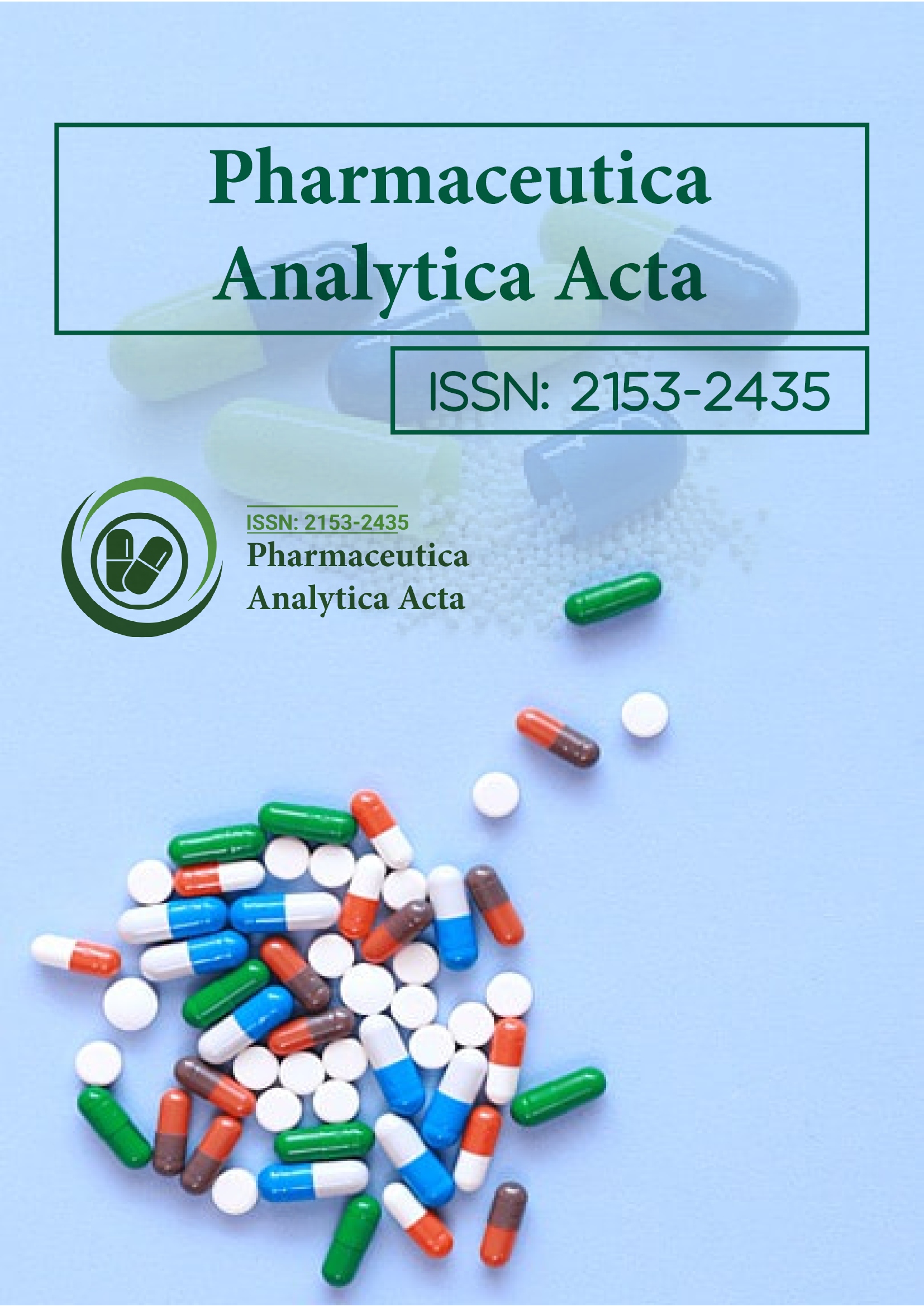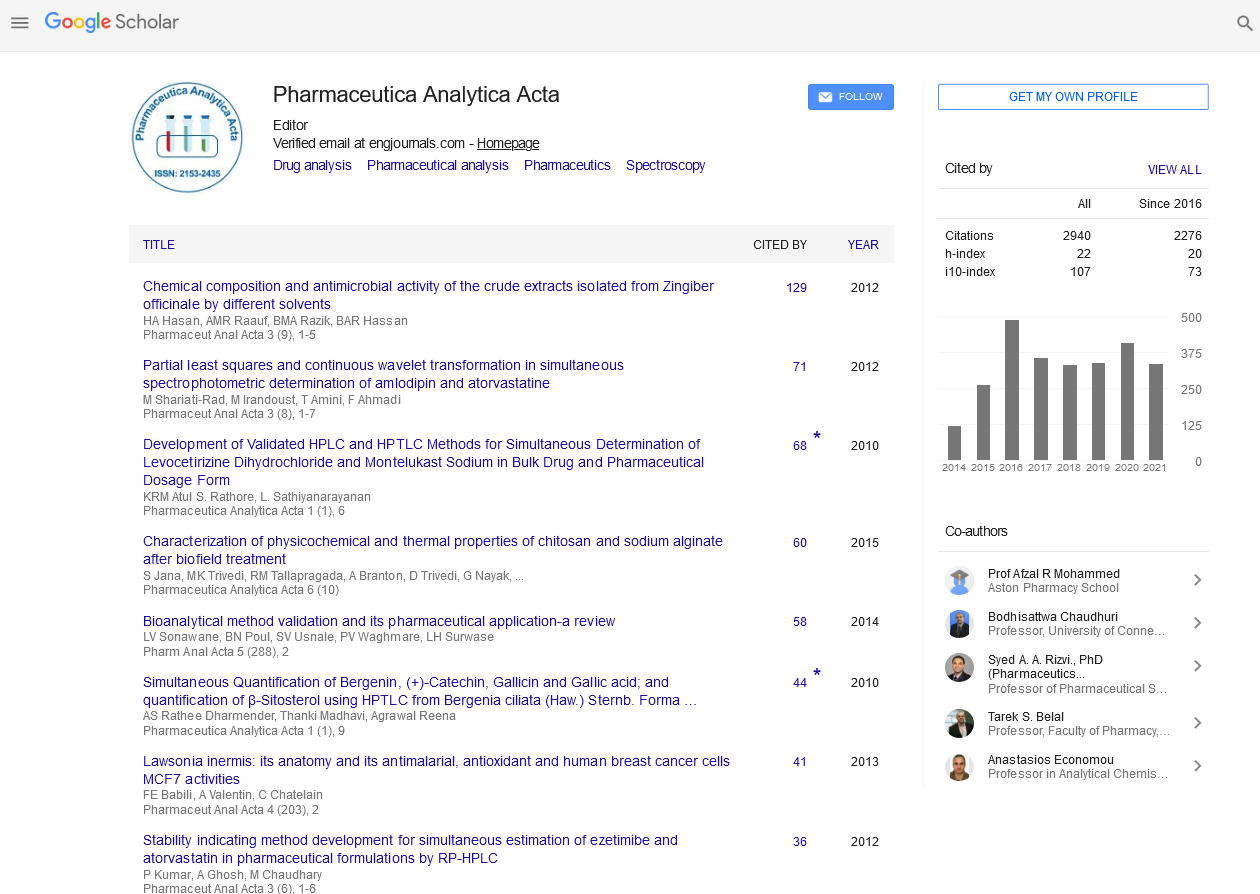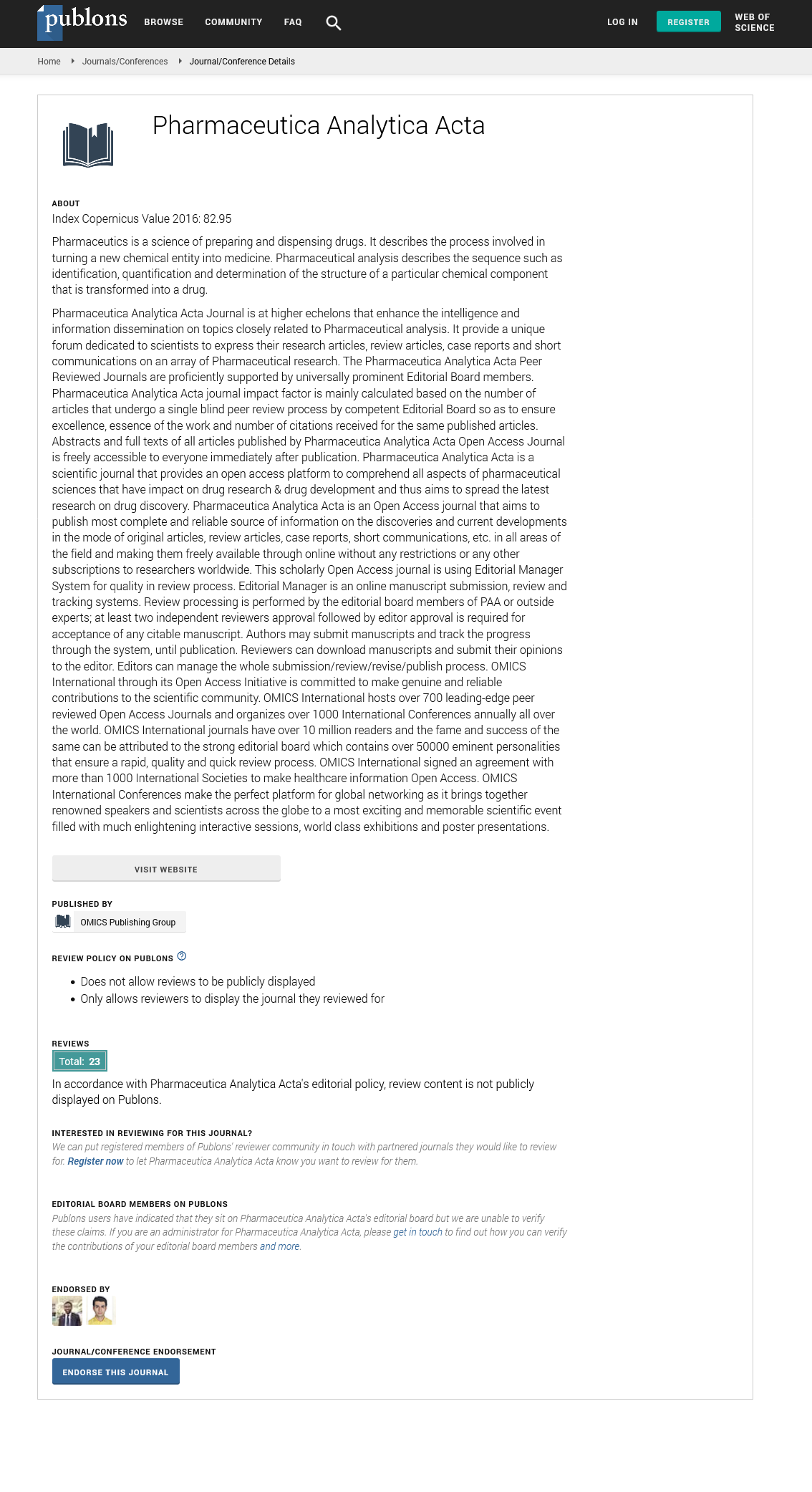Indexed In
- Open J Gate
- Genamics JournalSeek
- Academic Keys
- JournalTOCs
- The Global Impact Factor (GIF)
- China National Knowledge Infrastructure (CNKI)
- Ulrich's Periodicals Directory
- RefSeek
- Hamdard University
- EBSCO A-Z
- OCLC- WorldCat
- Publons
- Geneva Foundation for Medical Education and Research
- Euro Pub
- Google Scholar
Useful Links
Share This Page
Journal Flyer

Open Access Journals
- Agri and Aquaculture
- Biochemistry
- Bioinformatics & Systems Biology
- Business & Management
- Chemistry
- Clinical Sciences
- Engineering
- Food & Nutrition
- General Science
- Genetics & Molecular Biology
- Immunology & Microbiology
- Medical Sciences
- Neuroscience & Psychology
- Nursing & Health Care
- Pharmaceutical Sciences
Commentary Article - (2025) Volume 16, Issue 3
Pharmaceutical Sample Preparation as a Determinant of Analytical Accuracy
Nandita Rao*Received: 30-Aug-2025, Manuscript No. PAA-25-30227; Editor assigned: 01-Sep-2025, Pre QC No. PAA-25-30227; Reviewed: 16-Sep-2025, QC No. PAA-25-30227; Revised: 22-Sep-2025, Manuscript No. PAA-25-30227; Published: 30-Sep-2025, DOI: 10.35248/2153-2435.25.16.825
Description
The techniques include solid-phase extraction, microfiltration and ultrasonic dispersion. Solid-phase extraction, in particular, has become an essential tool in isolating target compounds from complex matrices. It relies on selective adsorption and controlled elution processes to purify samples efficiently. Microfiltration removes particulate matter that may interfere with spectroscopic or chromatographic detection. Ultrasonic dispersion, on the other hand, utilizes acoustic energy to enhance solubility and release analytic trapped within solid or semi-solid matrices. Each of these techniques is adapted according to the characteristics of the formulation and the nature of the analytic being studied. A recurring subject in many studies is the preservation of analytic stability during the preparation stage. Analyses are often sensitive to environmental factors such as temperature, light. Researchers have demonstrated that adjusting pH to an optimal range, incorporating stabilizing agents and maintaining controlled temperature conditions during extraction can effectively minimize degradation. Some compounds undergo hydrolysis or oxidation when exposed to certain solvents, which necessitates the careful selection of extraction media. Studies comparing manual and automated extraction systems reveal that automation not only enhances throughput but also reduces variability introduced by human handling. Automated systems maintain uniform timing, temperature and solvent flow, leading to improved reproducibility of results. The reliability of analytical measurement depends on how well the prepared sample reflects the original material.
Any chemical alteration during preparation introduces bias, rendering the subsequent data questionable. Therefore, detailed documentation of every step in the preparation process is indispensable. Authors contributing to the journal are encouraged to provide comprehensive descriptions of the methods used, including solvent ratios, filtration materials, evaporation conditions and recovery calculations. Such transparency enables other scientists to reproduce experiments and verify findings independently. The peer-review process reinforces this standard by emphasizing the need for completeness and accuracy of procedural details. Beyond the laboratory, refinement of sample preparation procedures also carries environmental and economic significance. The reduction of solvent volumes, optimization of extraction efficiency and minimization of waste contribute to more sustainable analytical practices. Organic solvents used in laboratories often have environmental hazards and their reduction not only lessens ecological impact but also improves safety and cost-efficiency. Many research articles focus on developing eco-friendly extraction techniques using water-based solvents, supercritical fluids, or ionic liquids. These innovations represent a growing awareness that analytical science must advance in harmony with sustainability principles. Another area of focus within sample preparation research is the adaptation of techniques to novel systems, including nanoparticles, liposomes and polymeric drug carriers. These advanced delivery systems pose new analytical challenges because of their heterogeneous composition and instability. Researchers have developed specialized protocols to extract active ingredients without damaging their structural encapsulation. For instance, temperature-controlled ultrasonication and phase-separation techniques allow for selective isolation of drug molecules from lipid-based carriers while maintaining their physical integrity.
Reproducibility remains a persistent concern in analytical science and sample preparation is one of its most critical determinants. Studies that compare performance across laboratories often reveal that differences in sample handling contribute more significantly to variation than differences in instrument calibration. The establishment of standardized sample preparation protocols therefore serves as a crucial step toward achieving inter-laboratory consistency. By encouraging uniformity in preparation methods, the journal contributes to building a more reliable foundation for the data exchange and regulatory compliance. Furthermore, sample preparation influences not only quantitative outcomes but also qualitative interpretation of results. In chromatographic and spectroscopic analyses, impurities introduced during preparation can mimic or mask analytic peaks, leading to misidentification or erroneous conclusions. Thorough washing, filtration and blank testing procedures ensure that the measured signal originates solely from the analytic interest. Modern laboratories increasingly incorporate pre-analysis quality checks that include blank extractions, control samples and recovery experiments to validate the accuracy of their preparation methods.
In recent years, the field has witnessed the integration of automation and miniaturization into sample preparation workflows. Automated solid-phase extraction units and robotic liquid handlers have transformed routine sample processing by increasing precision and reducing manual labor. Miniaturized extraction systems, such as micro solid-phase extraction and dispersive liquid micro extraction, offer comparable analytical performance with drastically reduced solvent consumption and sample volume. These innovations align scientific advancement with both efficiency and environmental responsibility. Through its consistent focus on refining sample preparation, it continues to strengthen one of the most essential foundations of the research. By encouraging detailed reporting, innovation in technique and sustainability in practice, the journal fosters analytical excellence that extends beyond instrumentation. The future of analysis will depend as much on the precision of analytical instruments as on the integrity of the samples they analyze. Meticulous preparation, thoughtful selection of methods and unwavering attention to detail will remain central to producing reliable and meaningful data that advance science and ensure the quality of medicines worldwide.
Citation: Rao N (2025). Pharmaceutical Sample Preparation as a Determinant of Analytical Accuracy. Pharm Anal Acta. 16:825.
Copyright: © 2025 Rao N. This is an open-access article distributed under the terms of the Creative Commons Attribution License, which permits unrestricted use, distribution and reproduction in any medium, provided the original author and source are credited.


